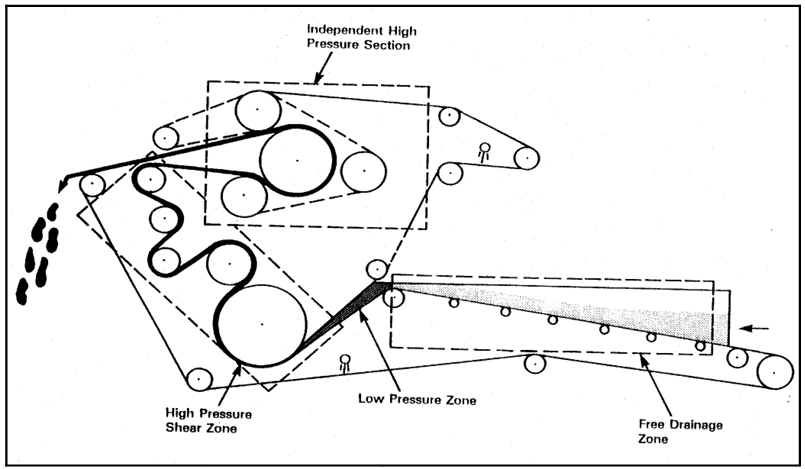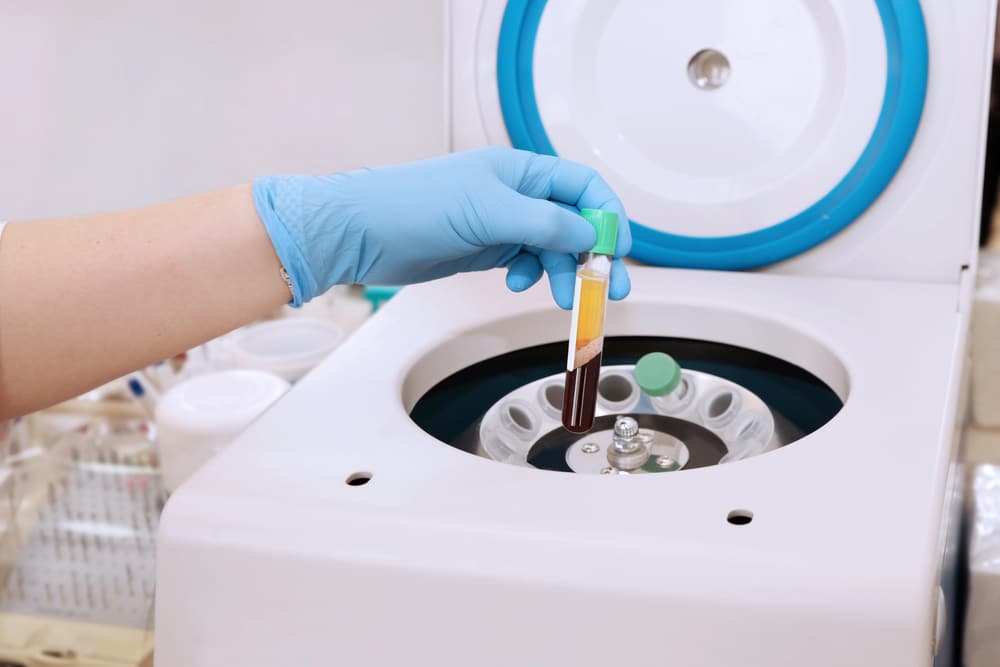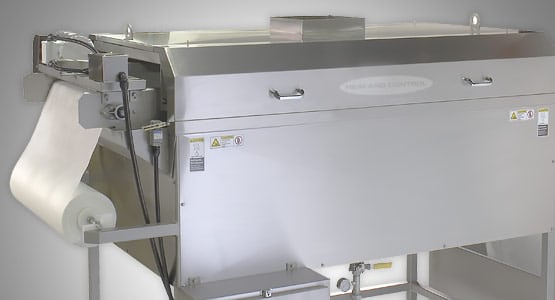Belt filter presses are used to remove water from liquid wastewater residuals and produce a non-liquid material referred to as “cake”. Dewatered residuals, or cake, vary in consistency from that of custard to moist soil. Dewatering serves the following purposes:
- Reducing the volume, thus reducing storage and transportation costs.
- Eliminating free liquids before landfill disposal.
- Reducing fuel requirements if residuals are to be incinerated or dried.
- Producing a material which will have sufficient void space and volatile solids for composting when blended with a bulking agent.
- Avoiding the potential of biosolids pooling and runoff associated with liquid land application.
- Optimizing subsequent processes such as thermal drying.
A belt filter dewaters by applying pressure to the biosolids to squeeze out the water. Biosolids sandwiched between two tensioned porous belts are passed over and under rollers of various diameters. Increased pressure is created as the belt passes over rollers which decrease in diameter. Many designs of belt filtration processes are available, but all incorporate the following basic features: polymer
conditioning zone, gravity drainage zones, low pressure squeezing zone, and high pressure squeezing zones. Advanced designs provide a large filtration area, additional rollers, and variable belt speeds that can increase cake solids by five percent. The general mechanical components of a belt filter press include dewatering belts, rollers and bearings, belt tracking and tensioning system, controls and drives, and a belt washing system. Figure 1 depicts a typical belt filter press.
APPLICABILITY
Belt filter presses can be used to dewater most biosolids generated at municipal wastewater treatment plants and are a common type of mechanical dewatering equipment. Using mechanical equipment to dewater solids may not be the most cost effective alternative for wastewater treatment plants operating at less than about 4 mgd. The selection of dewatering equipment should be based on the results of a site specific biosolids management plan which identifies both processing and end use alternatives and estimates costs. It may be less expensive to haul liquid to an application site or pay a processing facility to dewater and process or landfill the dewatered cake. Smaller facilities should also evaluate non-mechanical dewatering methods, such as drying beds or reed beds.
Read more: Belt Filter Press










